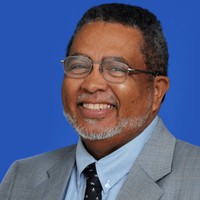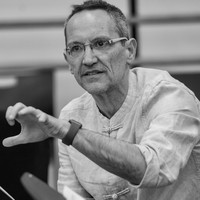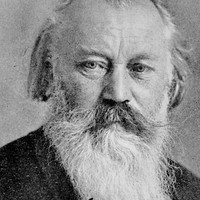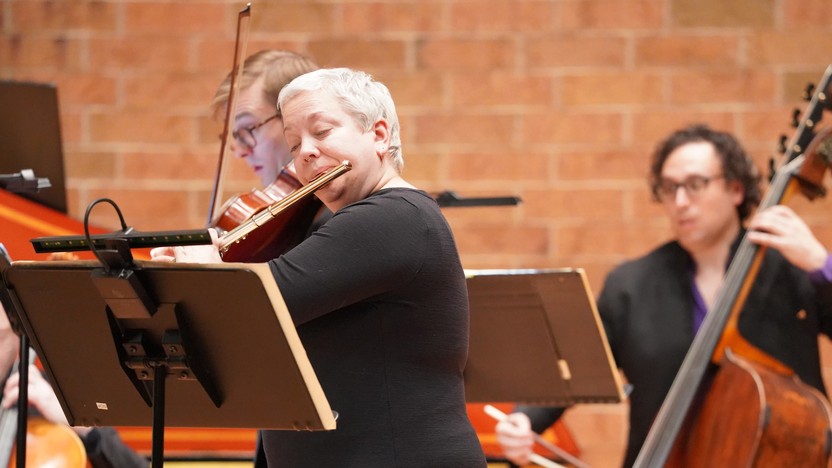Details

Adolphus Hailstork
Saint Paul’s Blues (SPCO Commission)
(Duration: 3 min)
The piece was commissioned by The Saint Paul Chamber Orchestra for SPCO flutist Alicia McQuerrey. The beginning slips and slides around in the lower register of the instrument in a bluesy style, and then the music moves up to the middle and upper registers for a characteristic rippling flute melody.
Adolphus Hailstork ©2020

Osvaldo Golijov
Tenebrae for String Quartet
(Duration: 14 min)
Born in Argentina into a family of Jewish immigrants from Romania, Osvaldo Golijov developed broad tastes in music and a fluid knack for blending and transcending styles. Following studies in Israel and at the University of Pennsylvania, he established himself in the 1990s as a major new voice in contemporary composition through works of chamber music including Dreams and Prayers of Isaac the Blind (a clarinet quintet steeped in Ashkenazi Jewish traditions) and Last Round (a string ensemble tribute to fellow Argentinian Ástor Piazzolla). Golijov wrote the following program note.
I wrote Tenebrae as a consequence of witnessing two contrasting realities in a short period of time in September 2000. I was in Israel at the start of the new wave of violence that is still continuing today, and a week later I took my son to the new planetarium in New York, where we could see the Earth as a beautiful blue dot in space. I wanted to write a piece that could be listened to from different perspectives. That is, if one chooses to listen to it “from afar,” the music would probably offer a “beautiful” surface but, from a metaphorically closer distance, one could hear that, beneath that surface, the music is full of pain. I lifted some of the haunting melismas from Couperin's Troisieme Leçon de Tenebrae, using them as sources for loops, and wrote new interludes between them, always within a pulsating, vibrating, aerial texture. The compositional challenge was to write music that would sound as an orbiting spaceship that never touches ground.
Aaron Grad ©2024

Reena Esmail
The Light is the Same
Barbara Bishop, oboe
Sang Yoon Kim, clarinet
Andrew Brady, bassoon
James Ferree, horn
(Duration: 9 min)
Religions are many
But God is one
The lamps may be different
But the Light is the same
—Rumi (1207–1263)
“I wish I could live in India and America at the same time,” says Reena Esmail, the daughter of Indian immigrants who has become one of the most respected young composers in the United States; “I wish they shared a border, and I could build a little home right in between them. I know I can’t do that in the physical world, but this is where I live every day in my music.”
Esmail’s compositions straddle two of the world’s most sophisticated musical traditions. On one side is the art music of Europe and its system of tonal harmony that developed over the last 400-plus years, and on the other, Hindustani classical music from North India, organized around collections of tones known as raags that go back many centuries further. Studies at the Juilliard School and the Yale School of Music grounded Esmail in the practices of the West’s classical music, including its precise system of notation that allows performers of any background to interpret unfamiliar nuances. As a Fulbright-Nehru Scholar, she was able to spend a year in India studying the classical music of her ancestors, absorbing the oral tradition built on complex patterns and pitches that often can’t be categorized within Western norms.
Esmail wrote the following program note for The Light is the Same, commissioned by Imani Winds and released on their album BRUITS in 2021:
“Like many people, I spent the last half of 2016 trying to make sense of what was happening in our country and in our world. In my search for texts for my oratorio, This Love Between Us, which I was writing concurrently, I came across these wise words from the thirteenth-century Sufi mystic poet, Rumi. He states so beautifully that, even if our methods for searching for meaning and happiness look very different, the things we seek are so similar.
“This piece uses two Hindustani raags: Vachaspati and Yaman. The bhav, or aesthetic of each raag, is so different: Vachaspati is dark, brooding, complex and dense. Yaman is light and innocent. And yet, practically speaking, only one note is different between them. The melodies they generate and the way they move makes them feel worlds apart, and yet their notes are almost exactly the same. The piece begins in Vachaspati, in desolate, spare melodic lines. Slowly, as Yaman peeks through the dense harmonies, the two raags begin to weave together into a seamless composite.”
Aaron Grad ©2024

Johannes Brahms
String Sextet No. 1
Nicholas Tavani, violin
Maiya Papach, viola
Lisa Sung, viola
Karen Ouzounian, cello
Joshua Koestenbaum, cello
(Duration: 39 min)
The first work of chamber music that Johannes Brahms issued publicly was his Piano Trio No. 1, composed in 1853 after his pivotal introduction to Robert and Clara Schumann. The following year, after Robert’s leap into the Rhine River and confinement in an insane asylum, the 21-year-old Brahms moved to Düsseldorf to help manage the Schumann household and care for the children while Clara supported the family playing concert tours. In the two years that Brahms spent as the de facto head of the Schumann household, he developed a deep (and not entirely platonic) affection for Clara, 14 years his senior.
It took Brahms a few years to stabilize after he left the Schumann orbit, musically and personally, but he found his footing by concentrating on chamber music between 1860 and 1865, when he created a series of seven groundbreaking scores. The earliest of the series employed an uncommon ensemble, forming a sextet with pairs of violins, violas and cellos. There were very few examples of earlier string sextets (just a handful from the previous century by the cellist-composer Luigi Boccherini, and a more recent effort from Louis Spohr), but this lack of tradition probably appealed to Brahms, who shied away from legacy-laden genres like string quartets and symphonies until later in life. The Sextet in B-flat debuted in Hanover on October 20, 1860, and it clearly pleased the composer since he returned to the same format for a second sextet in 1865.
In the opening movement of the First String Sextet, the ensemble makes the most of the diverse textures that can be achieved with six instruments, culminating in an all-plucked coda. In the middle movements, Brahms updated two older traditions — first a theme and variations, and then a scherzo — demonstrating how well he had integrated the lessons of Joseph Haydn, Wolfgang Amadeus Mozart and Ludwig van Beethoven. The Rondo finale maintains that Classical connection, with light-hearted music in the spirit of a Serenade. The Sextet may have been a rarity when Brahms approached it, but his two contributions proved so influential that they birthed a new chamber music genre, with major additions following from Antonín Dvořák, Pyotr Tchaikovsky and Arnold Schoenberg in the decades to come.
Aaron Grad ©2021
About This Program
This Express Concert highlights SPCO musicians in various configurations of small, chamber ensembles. SPCO flutist Alicia McQuerrey will open the concert, performing Adolphus Hailstork’s Saint Paul’s Blues, a work commissioned by the SPCO and first performed by McQuerrey at the height of the pandemic — this concert will feature the SPCO’s first performance of the work to a live audience. A string quartet by Osvaldo Golijov and a wind quintet by Reena Esmail will lead into the program’s titular work, Johannes Brahms’ first string sextet, a groundbreaking work that, in its time, introduced a new chamber configuration that went on to be embraced by other composers including Antonín Dvořák, Pyotr Tchaikovsky and Arnold Schoenberg.
Our Express Concerts are 60-75 minutes of music without intermission. Learn more at thespco.org/express.

